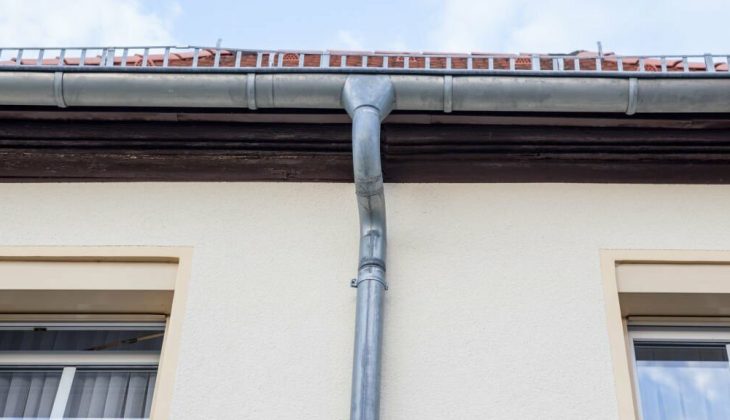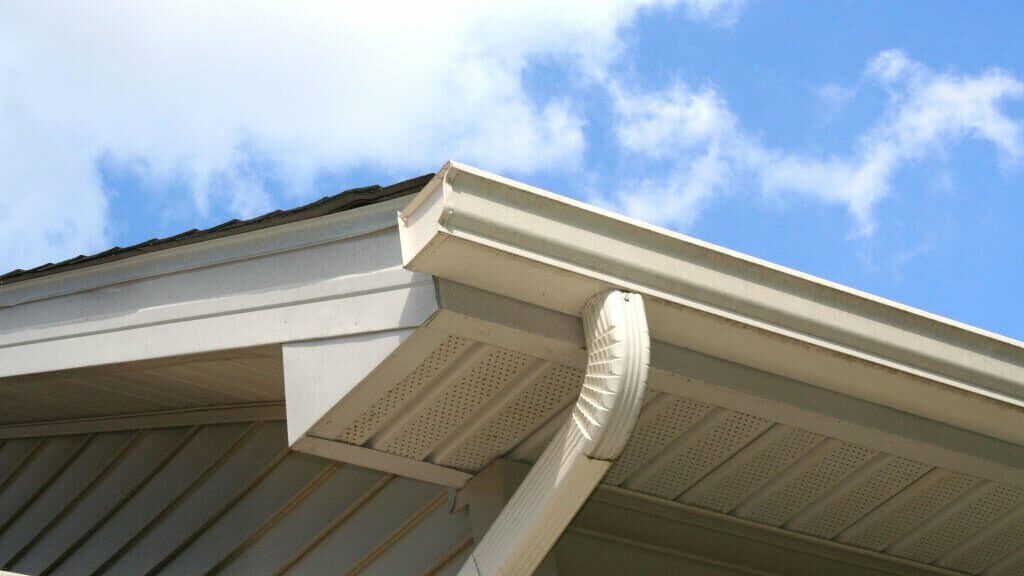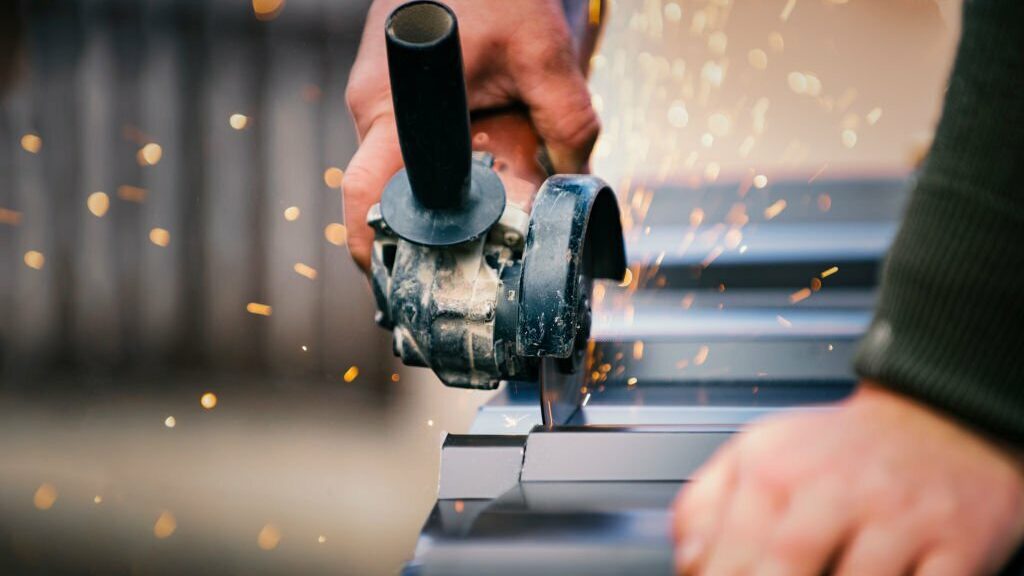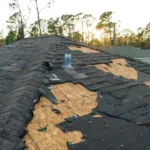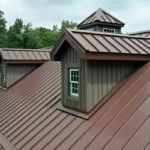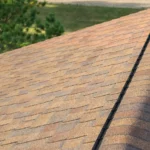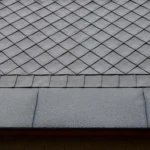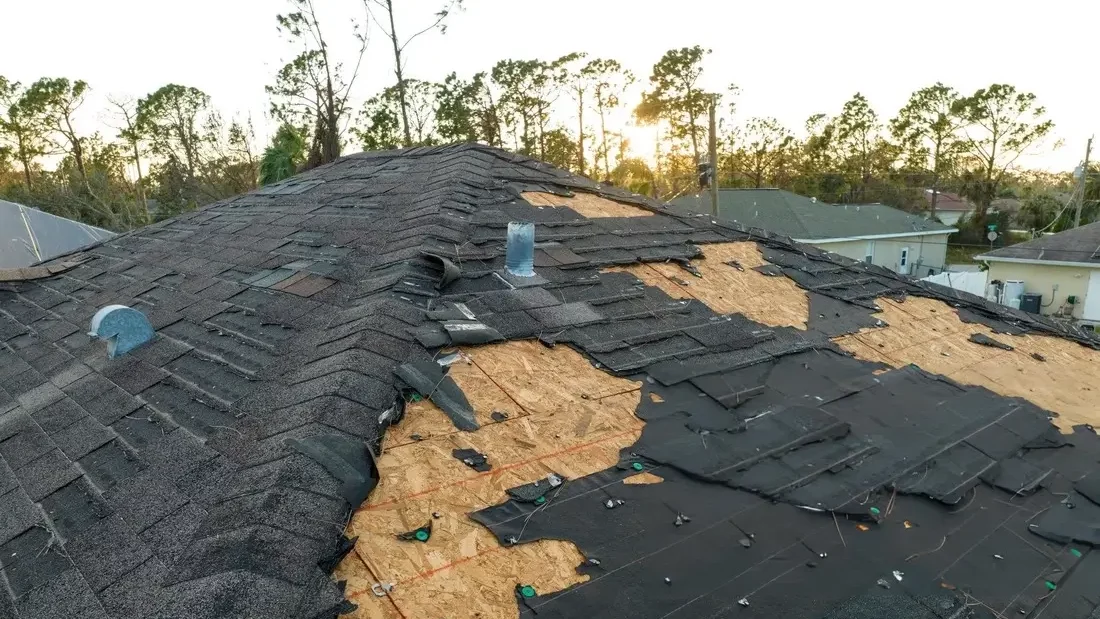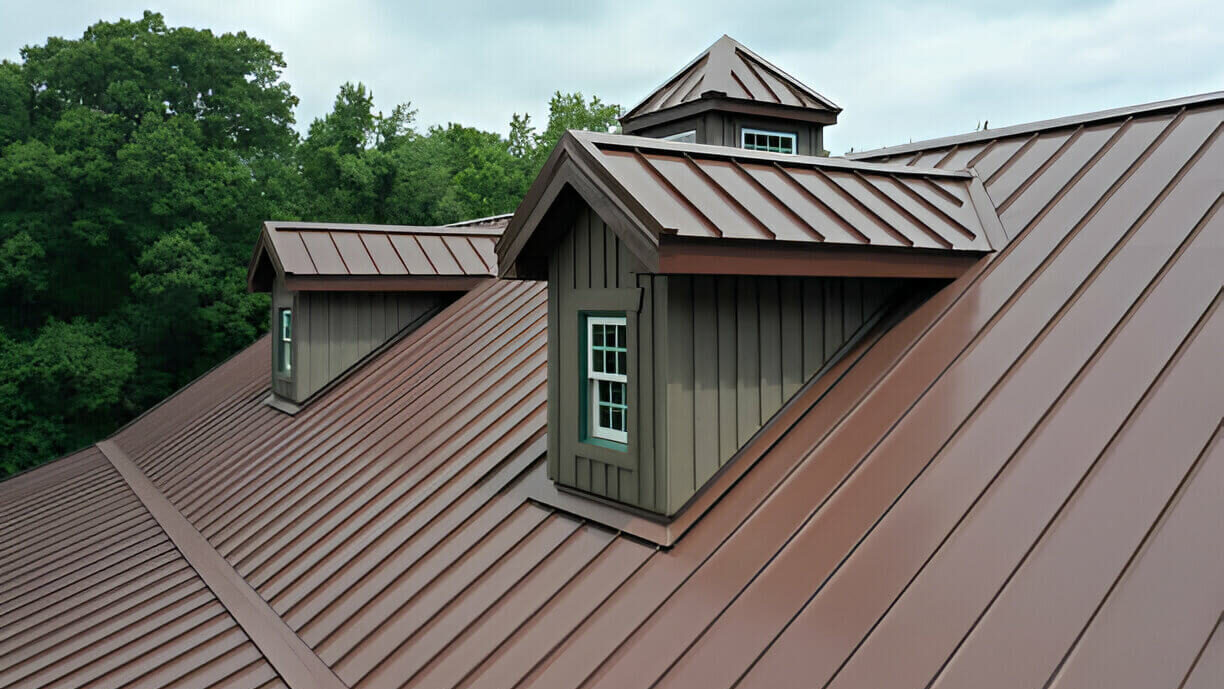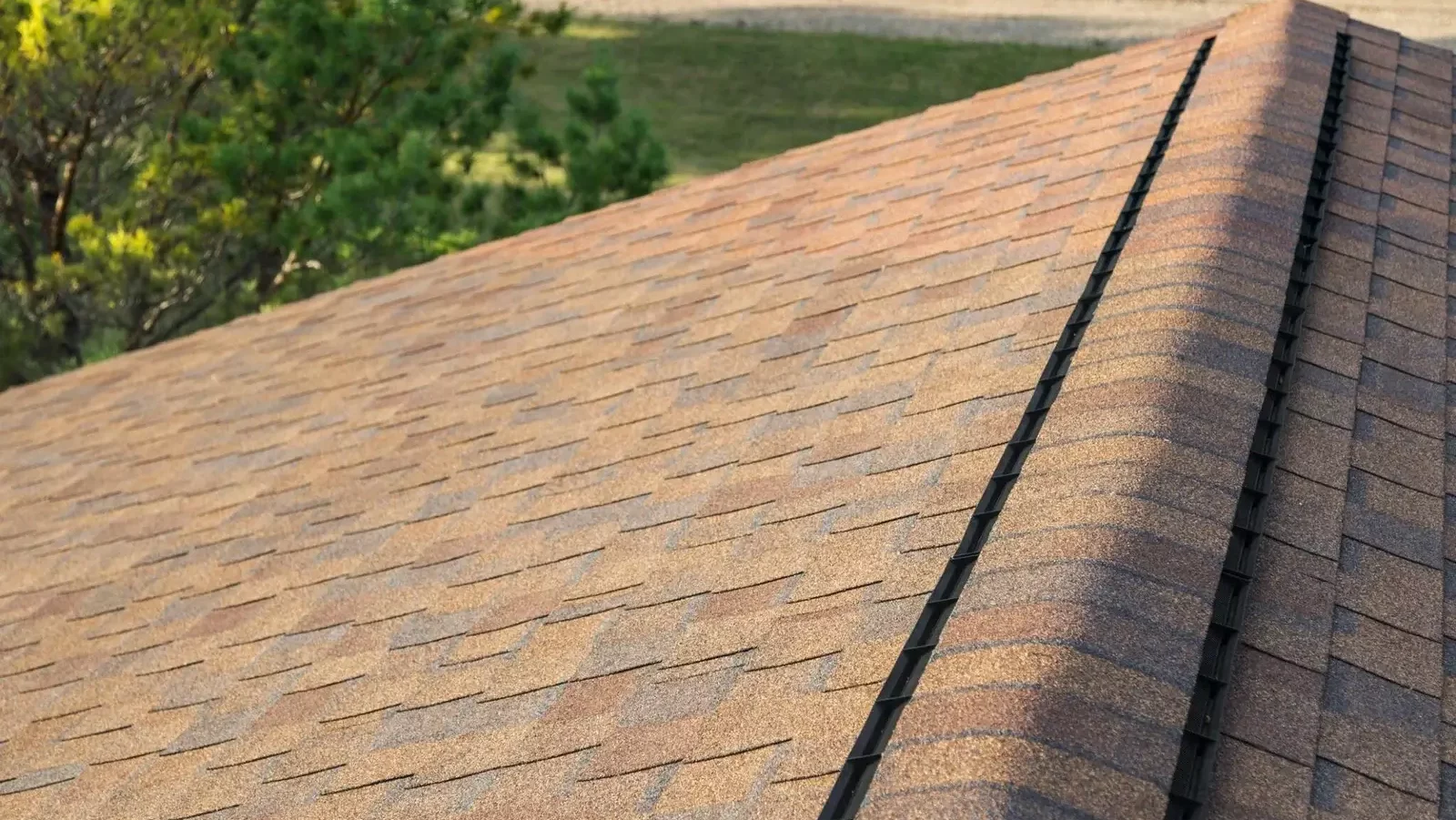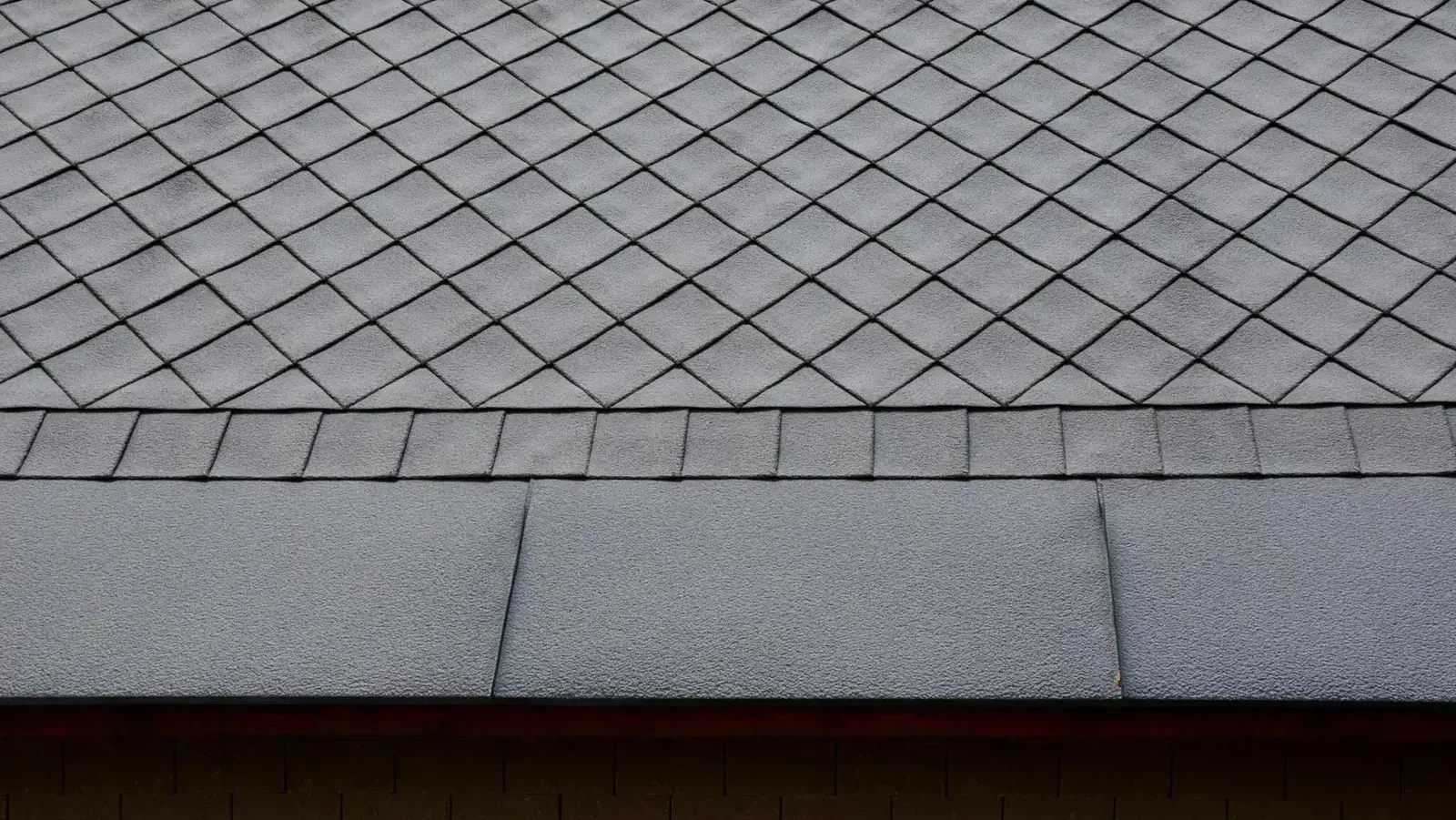Drip edge and Gutter Apron are essential components for your roof, and while roofers are familiar with them, homeowners might find them a bit perplexing.
Table of Contents
ToggleBoth help guide rainwater straight from your attic to the gutters.
This keeps your roof strong and leak-free.
The main difference?
Their shape and where they sit on your roof. If they need to be set up right, you could be looking at some serious gutter issues down the road.
Think of them as rain guides for your house, ensuring water goes where it should!
What Is Drip Edge?
Drip edges are metal strips shaped like an “L,” placed at your roof’s edge. This is not just any metal strip but your home’s guard against water damage.
It cleverly channels rainwater straight into the gutter, keeping it away from the fascia (the board along the roof line).
What does a Drip Edge do?
The drip edge does the best filtration from the roof to the gutter system.
Moreover, the drip edge protects the roofs in extreme weather conditions and your attics from any leakages, which is particularly relevant considering the average insurance payout for hail damage
It’s very important to install rain gutter drip edges on your roofs to get the benefits and prolong the lifespan of your roofs.
Here is the scary part!
If you don’t have the drip edge of your roofs, the water will rot all the structures of the roofs by staying behind the gutter.
How Does A Drip Edge Work?
In the roofing world, a drip edge plays a crucial role. It is a specially designed piece of metal that sits on top of the fascia board at the roof’s edge.
It’s main job?
To clear rainwater from the fascia, ensure it flows into the gutters. Doing so safeguards your roof’s lower parts from water damage. Typically, you will find drip edges along a roof’s eaves, gables, and rake.
How To Properly Install A Drip Edge On Your Roofs?
Following are the steps for an easy Installation of drip edges on your home roofs:
- First, cut the drip edges according to your desired lengths with a metal snip.
- Start the installation process from the lower part of the roof.
- Lift the shingles.
- Slide the top rim of the drip edge beneath the lifted shingles.
- Secure the end of the drip edge with roofing nails.
- Place the nail within the drip edge and into the roof covering, but don’t push it through the fascia.
- You should carefully arrange the shingles back into their original position and start over-hanging the joints.
- Continue this process for all the roof edges until you get covered with your roof.
Pros
- Drip edge protects your roof and underlying structure from water damage.
- They prevent rot and decay by preventing water from seeping into the roof deck.
- Drip edges can give your roofs a professional look if installed properly.
Cons
- Its installation process is quite complex.
- Drip edges are costly to be added to the roofs.
- It requires regular maintenance over time.
What Is a Gutter Apron?
A Gutter Apron is like a drip edge’s cousin, guiding water away from your roof.
But here’s the main thing!
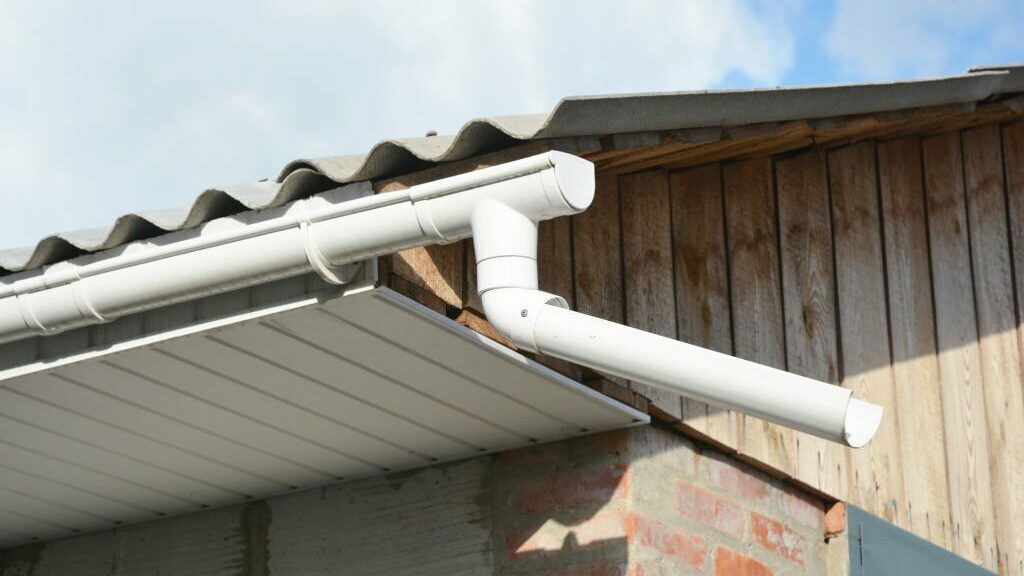
Gutter Aprons are L-shaped, not T-shaped. Think of them as special gear for roofs with gentle slopes, like the flashing metals you see, but with their unique job.
They are there to ensure water slides off your roof smoothly.
Understanding these nuances is crucial during a roof inspection for insurance companies, ensuring that every aspect of the roof’s design is accounted for.
What Does A Gutter Apron Do?
- A gutter apron is a vital shield for your home. It’s a thin metal strip at your roof’s edge.
- It guides rainwater straight to the gutter, preventing leaks and water damage.
- It’s handy when roof shingles are short and cannot reach the gutter.
- Stops water from sneaking behind the gutter, keeping your roof and walls safe.
- It is essential for protecting wood under the roof (roof sheathing) from rot.
- It helps keep your home dry and damage-free by blocking water from getting into the roof or inside your house.
How Does A Gutter Apron Work?
Gutter Apron is a barrier that prevents water from seeping behind the gutters, making it a suitable choice for the best gutters for metal roofs.
Instead, it directs the water into the gutters, ensuring proper drainage.
The gutter Apron extends outward, creating a small lip that guides water into the gutter. This lip channels water away from the fascia and roof deck, protecting against water damage.
Regular maintenance of the gutter apron and the rest of the gutter system is important to ensure its effectiveness in protecting your home roofs and structures.
How To Properly Install A Gutter Apron?
- Acquiring the Gutter Apron: Head to your local home improvement store. Look for gutter aprons, typically sold in 10-foot sections. They are affordable, with prices like Lowe’s L-shaped white galvanized steel drip edging, which is around $5.00 per section.
- Preparation: Get a pair of snips. You will need them to trim the gutter apron to match your roof’s length.
- Choosing the Right Material: Opt for an aluminium gutter apron, as it’s popular. If your roof has gutter steel, use steel roll flashing to avoid corrosion.
- Installation Process: In some cases, you might need to remove gutter sections temporarily. Secure the gutter apron with sheet metal screws. If there’s an existing drip edge, the apron goes right beneath it.
- Long-Term Benefits: Installing a gutter apron is not just about immediate fixes. It extends your gutters’ lifespan and safeguards your home’s foundation, walls, and roof against water damage.
Pros
- It protects against wood rot, pests, insects, etc.
- Gutter Apron has the most trusted and durable fascia guard.
- Prevent damage to the roof deck and home structure due to water penetration.
Cons
- It has code specifications.
- Once a roof has been built, you cannot install a gutter apron.
Major Difference Between Drip Edge vs Gutter Apron
Let’s find out the difference between drip edge vs Gutter Apron. They differ in the following aspects:
Shape
The most prominent difference between drip edge and gutter aprons is in their shapes.
Drip edges come in a T-shaped metal that allows them to function accordingly. At the same time, Gutter aprons possess an L-shaped metal body.
Ideal for low-slope roofs, gutter aprons serve their best function. Drip edges protect the roofs and fascia with higher pitch.
Installation Location
Installation location is another difference!
Drip edges and gutter aprons are key for keeping your roof in great shape, but they are used in different spots. Picture a drip edge as a water guide sitting right on the edge of your roof.
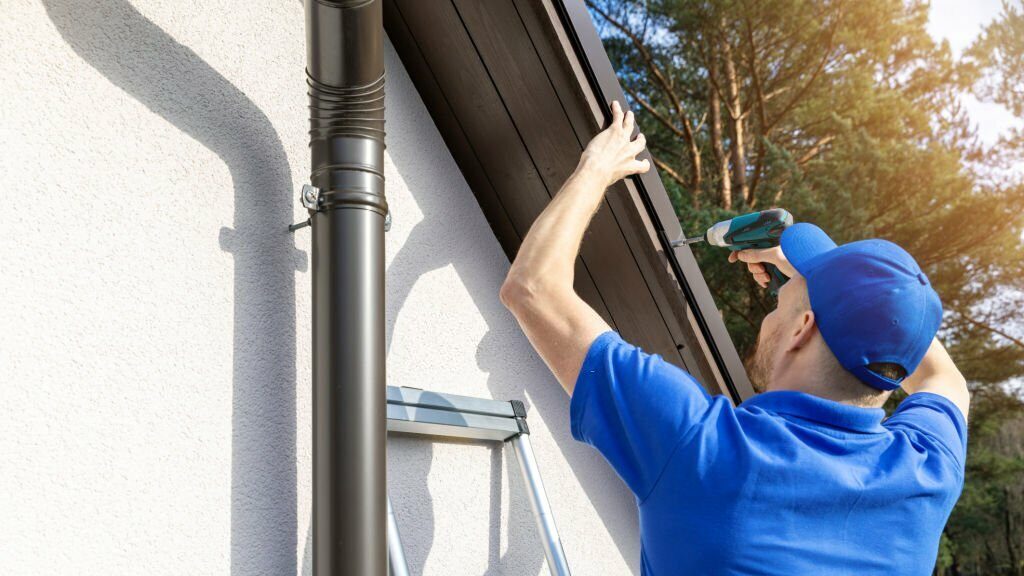
It is tucked under the shingles and lies on the fascia board. It ensures water slides off your roof and straight into the gutters, saving your roof from water damage.
The gutter apron is also slipped under the shingles but hangs over your gutter’s back edge.
This one’s a bit bigger and works to stop water from sneaking behind the gutters. It funnels the water right where it should go – into the gutter.
Also Check: Roof Replacement Financing
Durability
Gutter aprons are very hard to install again once they get damaged. Drip edges can be installed again and again when required.
There is no such difference regarding its durability. Both provide the best water management duty with enough power.
Their durability may vary depending on the material used and the installation done.
Benefits
A gutter apron is a handy tool for keeping your roof safe. It stops water from sneaking behind your gutters, preventing damage to your roof and nearby areas.
This little addition ensures water flows into the gutter, keeping everything working smoothly.
It’s great at stopping water from spilling over and creating leaks, ensuring water goes where it should.
It’s different from a drip edge, though they both protect your roof.
A drip edge keeps water off the fascia and ensures it flows into the gutters.
Cost
Gutter Apron will cost $1 to $ 5 per linear foot. This is the average cost that depends upon the material you choose. Labor charges are applied separately.
While drip edge costs $1 to $3 per linear foot, it may increase to $5 if you choose the best material.
It shows a gap between prices that are ignorable and similar.
Appearance
Drip edges tend to have a more prominent appearance. It is typically visible along the roof’s edge, underneath the shingles, providing an aesthetic look.
The gutter apron is usually less visible since it is installed beneath the shingles and behind the gutters. Its main purpose is to provide functionality rather than aesthetic appeal.
Go for a drip edge selection if you want a noticeable appearance.
Is Gutter Apron and Drip Edge Necessary to Maintain The Integrity of Roofs?
When picking between a gutter apron and a drip edge for your house, consider what you need, your roof’s style, and what your local rules say.
Both choices are important for protecting your roof and home from water damage.
It is smart to talk to a roofing expert before you make up your mind. They can help you figure out the best option for your situation.
Do I Need a Drip Edge And Gutter Apron?
Choosing between a drip edge and a gutter apron is difficult.
Some people choose it by considering the differences, and some do it by giving their luck a chance.
The need for a drip edge and gutter apron depends upon your need for specifications. It mostly depends upon the design of your roof and the different codes a building possesses.
It’s best to consult a professional to decide by going through a thorough investigation of your roof.
Drip Edge vs Gutter Apron FAQs
Do gutters go under the drip edge?
Yes, gutters are typically installed under the drip edge. The drip edge is usually over the gutter. The drip edge is placed along the roof’s edge, underneath the shingles, to direct water away from the fascia and into the gutters. This helps protect the roof edge and underlying structure from water damage.
Can You Install Gutter Apron Over Drip Edge?
Yes, you can install a gutter apron over the drip edge. As both are installed at different positions on the roof, you can provide an additional layer of protection against water infiltration by installing the gutter apron over the drip edge.
Is It Worth Installing a Drip Edge or Gutter Apron?
Drip edge or gutter aprons are worth installing as they protect your home structure against water damage. Both can extend the lifespan of your roofs and prevent costly repairs.
Can Drip Edge Be Installed After Shingles?
Installing a drip edge before the shingles is generally recommended to ensure proper water drainage. However, you can install a drip edge after shingles by lifting the shingles or sliding the drip edge underneath.
Conclusion
To sum up, gutter aprons and drip edges protect your roof and home from water damage.
A gutter apron is installed behind the gutters to prevent water from seeping behind them. This helps maintain the integrity of the gutters and prevents water damage to the roof and surrounding areas of your home.
A drip edge is installed along the roof edge to direct water into the gutters, preventing water infiltration and potential damage to the roof deck and underlying structure. Both components work together to safeguard your home against water damage.
You should always consult a professional to determine if your roof would benefit from installing a drip edge and gutter apron.

